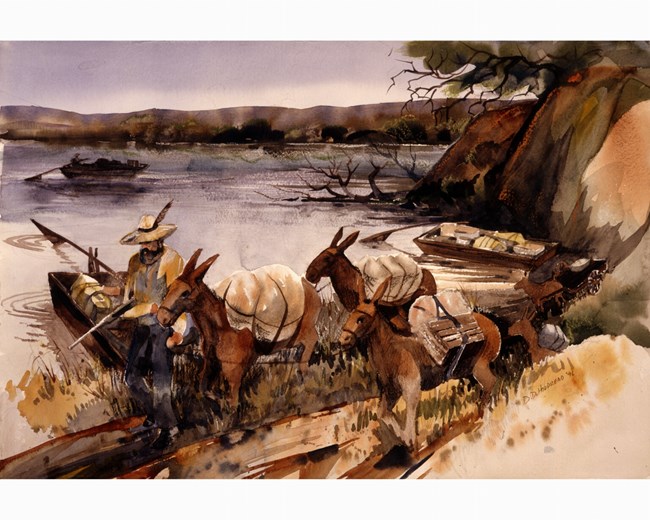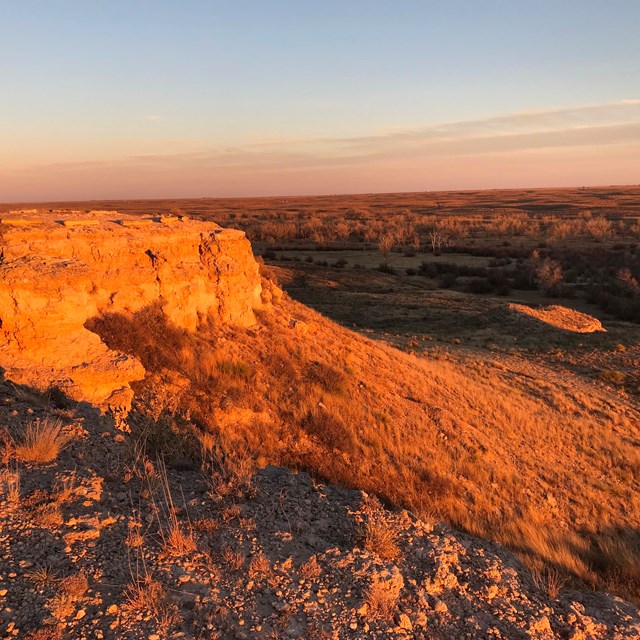Last updated: June 8, 2021
Article
The Strange Yet Familiar World of William Becknell’s 1821 Journey to Santa Fe

Doug Holdread
It’s natural to view history through the lens of a specific person or place, but sometimes this blinds us to the bigger picture. Historians often focus on William Becknell, the debt-ridden Missourian often referred to as the “father of the Santa Fe Trail.” Yet Becknell’s first visit to Santa Fe in 1821 did not occur in a vacuum. Legal commerce between the United States and New Mexico was just one of many changes sweeping through the Americas, forming the outlines of the nation (and its neighbors) that we know today.
Between the 1780s and the 1820s, the United States underwent tremendous changes. Its population tripled, rising to almost 12 million; its land area more than doubled. By 1821, the original 13 states had grown to 24. Yet the nation’s origins lived on in some of its most notable citizens. James Monroe, a Founding Father and the last member of the so-called “Virginia Dynasty,” served as president from 1816 to 1824.
An expanding nation demanded new methods of transportation. Parts of the Erie Canal, designed to connect the Atlantic coast with the Great Lakes, were already functioning by the time Becknell arrived in Santa Fe. This period, which historians call the “market revolution,” saw increased movement of goods and people via roads and canals (many of them federally financed). Becknell participated in a much broader commercial revolution, one that connected the US and Mexico through the exchange of goods, currency, and culture.
Despite rapid advances in transportation, the United States was far from unified. New technologies like canals and steamboats carried farmers and their crops to market, but they also helped expand the South’s cotton economy westward. Missouri joined the Union as a slave state in 1821, becoming the first state located entirely west of the Mississippi. Although deeply in debt, Becknell possessed freedoms that many residents of Missouri lacked.
Somewhere west of Franklin, the racial slavery of the United States gave way to another kind of captivity. Slavery had already existed for centuries in the Spanish borderlands, tying Europeans and American Indians together in a violent cycle of trading, raiding, and retaliation. The Comanche, rulers of the southern plains, presided over a vast exchange of horses, bison hides, manufactured goods, and captives of all ethnicities. Just before reaching Santa Fe, Becknell encountered a New Mexican militia charged with investigating a recent Comanche raid.
Becknell was not merely traveling from the United States into Mexico. His route to Santa Fe wound through the competing claims of multiple nations. In 1819, Spanish and American leaders agreed on a new territorial boundary starting at the Sabine River and stair-stepping northwest to the headwaters of the Arkansas River. After winning independence from Spain in 1821, Mexico insisted on maintaining this boundary. Yet parts of this international border fell on land that the Comanche and their allies, the Kiowa, had controlled since the late 1700s.
Many aspects of the 1820s United States look strange to us now. A Founding Father from Virginia occupied the White House. Americans still practiced slavery. Missouri was the westernmost state. Comanches controlled the southern plains. Canals were the latest big innovation in transportation. Mexico ruled what is now the American Southwest, and—by 1826—independence movements had successfully expelled colonial powers Spain and Portugal from mainland Latin America.
Yet many of the themes embodied by Becknell’s journey remain relevant today. Commerce between multiple nations defines our lives. Goods and people move at increasingly rapid speeds. The Southwest is still a place of vibrant cultural exchange. Crossing borders in search of economic opportunity remains an undeniable fact of American life.
Much of the Santa Fe Trail’s enduring power lies in its relevance to contemporary life. 1821 may look strange to our modern eyes but, if we squint, we can see the outlines of a more familiar image coming into focus.


